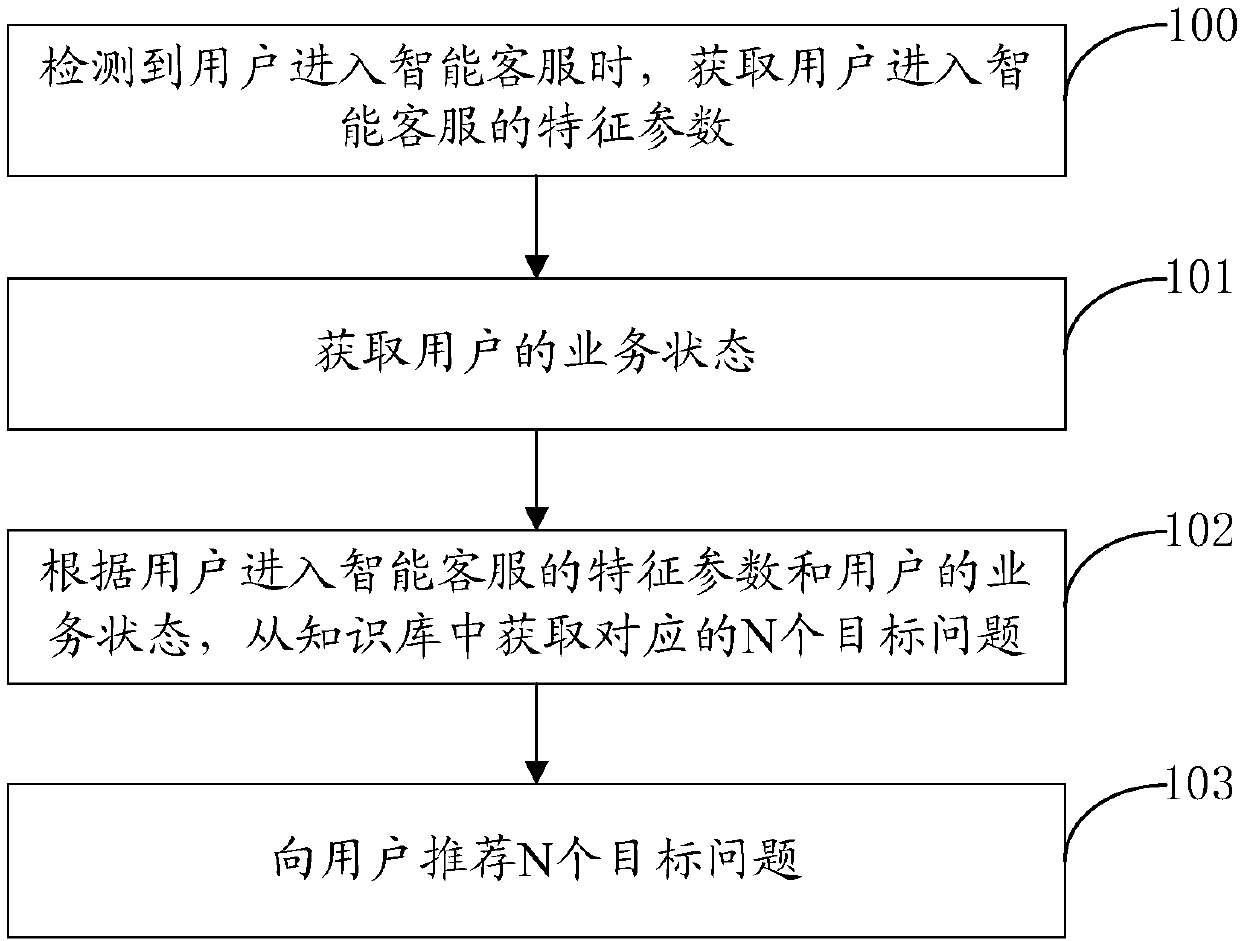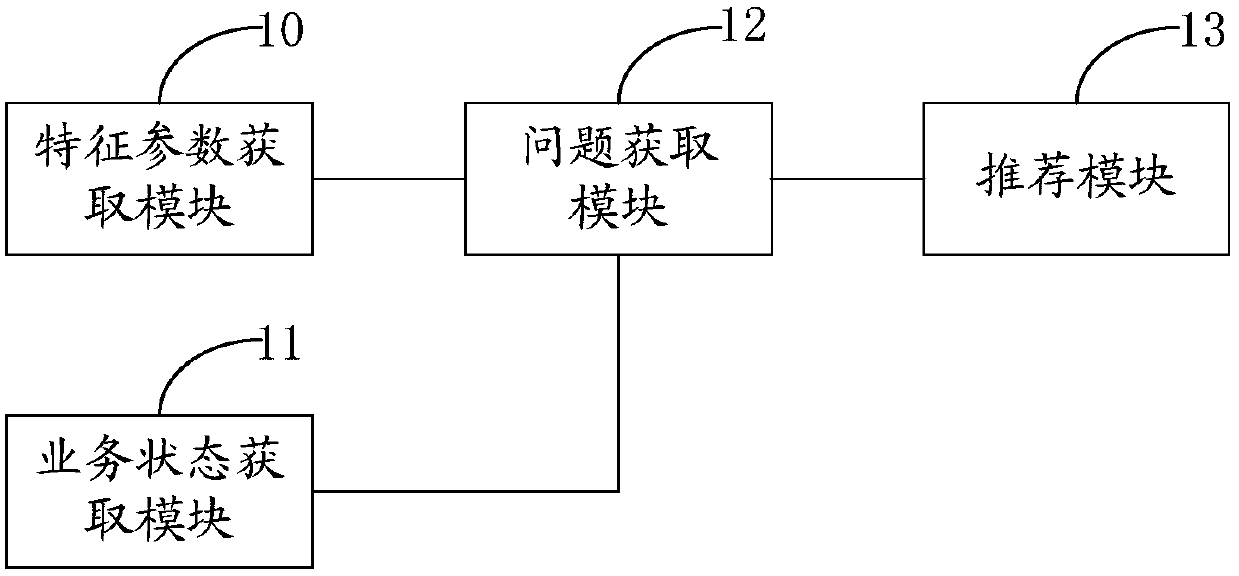Information recommendation method of intelligent customer service, server and computer readable medium
A technology for intelligent customer service and information recommendation, applied in computing, digital data information retrieval, instruments, etc., can solve problems such as low prediction accuracy and deviation
- Summary
- Abstract
- Description
- Claims
- Application Information
AI Technical Summary
Problems solved by technology
Method used
Image
Examples
Embodiment Construction
[0092] In order to make the object, technical solution and advantages of the present invention clearer, the present invention will be described in detail below in conjunction with the accompanying drawings and specific embodiments.
[0093] figure 1 It is a flow chart of Embodiment 1 of the information recommendation method for intelligent customer service of the present invention. Such as figure 1 As shown, the information recommendation method of the intelligent customer service in this embodiment may specifically include the following steps:
[0094] 100. When it is detected that the user enters the intelligent customer service, obtain the characteristic parameters of the user entering the intelligent customer service;
[0095] The execution subject of the information recommendation method for intelligent customer service in this embodiment is the server of the intelligent customer service. The server of the intelligent customer service can communicate with the website o...
PUM
 Login to View More
Login to View More Abstract
Description
Claims
Application Information
 Login to View More
Login to View More - R&D
- Intellectual Property
- Life Sciences
- Materials
- Tech Scout
- Unparalleled Data Quality
- Higher Quality Content
- 60% Fewer Hallucinations
Browse by: Latest US Patents, China's latest patents, Technical Efficacy Thesaurus, Application Domain, Technology Topic, Popular Technical Reports.
© 2025 PatSnap. All rights reserved.Legal|Privacy policy|Modern Slavery Act Transparency Statement|Sitemap|About US| Contact US: help@patsnap.com



